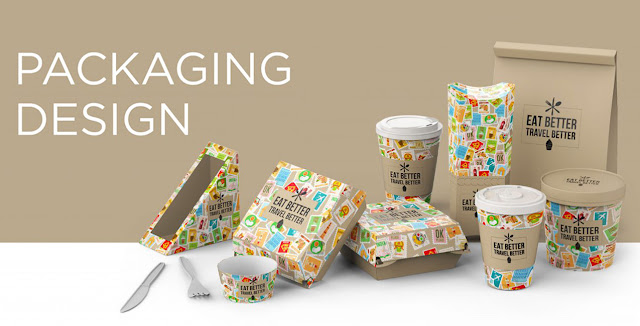Artistry and Utility: The Essence of Food Packaging Design
In the dynamic culinary landscape, food packaging design serves a dual purpose: safeguarding contents and engaging consumers with visual allure. With each item we choose from the shelves, the packaging design initiates a silent conversation. This article delves into the intricate fusion of art and function within food packaging design, uncovering how it shapes perceptions and enhances culinary encounters.
1. The Visual Encounter: The Influence of Initial Impressions:
Food packaging design marks the first connection between a product and a potential customer. It serves as a tacit storyteller, conveying both brand essence and product identity. Core elements of compelling packaging design comprise:
Color Harmony: Colors evoke emotions, setting the mood for the product. Warm tones may evoke comfort, while vibrant shades signal freshness.
Typography: Fonts and typography choices communicate the product's personality, be it sophisticated, playful, or rustic.
Visual Imagery: Artistic visuals or appetizing imagery instantly communicate product attributes and promises.
2. Harmonizing Aesthetics and Practicality: Marrying Form and Function:
While aesthetics hold significance, practicality is equally essential in food packaging design. Packaging must protect, preserve freshness, and deliver convenience. Critical aspects encompass:
Material Choice: Sustainable and eco-friendly materials align with consumer demands for environmentally responsible options.
Functionality: Packaging should facilitate easy opening, resealing, and portioning, ensuring user-friendly experiences.
Preservation: Effective packaging prevents contamination, spoilage, and extends the product's shelf life.
3. Brand Narration: Packaging as Identity and Storytelling:
Food packaging design encapsulates a brand's narrative, conveying values, heritage, and unique propositions. Effective branding involves:
Consistency: Packaging design harmonizes with the brand's overall visual identity, establishing a coherent and memorable image.
Transparency: Providing ingredient, sourcing, and preparation information fosters trust and rapport with consumers.
Distinctiveness: Unique packaging stands out amidst the crowded shelves, captivating attention and fostering recall.
4. Emotional Connectivity: Design Eliciting Empathy:
Superior packaging design evokes emotions, forging a connection between the consumer and the product. Emotionally resonant design involves:
Nostalgia: Design elements that evoke nostalgia trigger positive sentiments, nurturing emotional bonds.
Aspiration: Packaging that mirrors consumer aspirations, such as health or luxury, strikes a personal chord.
5. Eco-Conscious Packaging: A Responsible Culinary Choice:
In today's eco-aware landscape, sustainable packaging design gains momentum. Brands explore innovative solutions to reduce waste and carbon footprint:
Simplicity: Minimalist designs not only convey modern aesthetics but also minimize unnecessary printing and materials.
Reusable Packaging: Packaging that can be repurposed, like jars and containers, aligns with sustainability goals.
Biodegradable Materials: Bioplastics and biodegradable materials minimize ecological impact and waste.
Conclusion:
Food packaging design epitomizes the fusion of artistry and utility. It elevates products into experiences, engaging consumers on visual, emotional, and practical levels. As we select items from the shelves, let's remember the intricate design behind these sensory packages. In food packaging, every design choice narrates a story, inviting us to explore, savor, and appreciate the culinary treasures concealed within.




Comments
Post a Comment